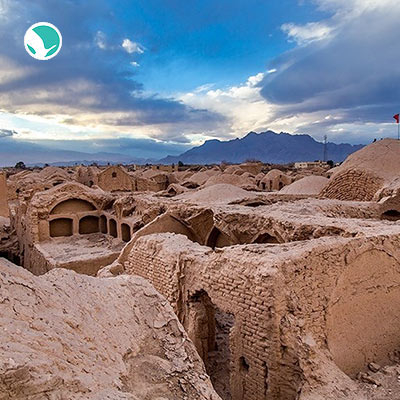



Asiatic cheetah (Acinonyx jubatus venaticus) is now one of the most endangered members of the family Felidae in the world. Over the past 30 years, Iran has been the last stronghold for the Asiatic cheetah, known in Iran as Yuz.
Once distributed from the Indian subcontinent through Afghanistan, Turkmenistan and Iran to the Arabian Peninsula and Syria, the Asiatic cheetah (Acinonyx jubatus venaticus) is now one of the most endangered members of the family Felidae in the world. The last physical evidence of the cheetah in India was of three shot in 1947 by the ruler of the then Korea state. Since then, the cheetah rapidly disappeared from most of its range (Nowell & Jackson, 1996). Over the past 30 years, Iran has been the last stronghold for the Asiatic cheetah, known in Iran as yuz, although there have been occasional reports of cheetahs across the border in Pakistan.

Before World War II, the cheetah population was estimated to be around 400, ranging in almost all of the steppes and desert areas of the eastern half of the country and some western terrains near the Iraqi border, but the advent of the jeep after the war marked the beginning of a decrease of this animal, largely through the slaughter of their essential prey species, the gazelle. As a result, the cheetah population declined greatly in number. In 1956, the former Iranian Game Council declared the gazelle as protected by law and the cheetah too, in 1959. The gazelle population recovered in many areas and so did the cheetah. Cheetah sightings increased in different localities, particularly inside the gazelle habitats, revealing a remarkable resurgence of its population and the efficacy of conservational measures. In the late 1970s, the cheetah population was estimated to be 200-300 for the whole of the country, while some other experts believing it as an over-estimation noted an approximate number of 100, including 30 cheetahs for Khosh Yeilagh area, where cheetah sighting was so common (e.g. in two cases in 1970 and 1973, 13 and 9 animals were seen just during a couple of hours). The cheetah range appeared to include all the desert areas of the eastern half of the country which consists of vast expanses of largely unpopulated terrains. In 1979, the country witnessed a revolution, which interrupted wildlife conservation for a few years. So many areas were occupied by livestock and the flat plains and steppes became the field of maneuver for armed 4WD vehicles and motorbikes chasing desert species, such as Persian gazelle Gazella subgutturosa, Jebeer gazelle Gazella bennettii, onager Equus hemionus onager, and also the cheetah. Gazelles declined in many areas, so the cheetahs had to move toward the foothills and mountainous habitats to avoid human persecution. On the other hand, because of the remarkable reduction in gazelle numbers, the cheetahs had to look for a new food source, wild sheep Ovis orientalis and wild goat Capra aegagrus, which, in their mountain habitat, had not suffered the same pressures as the gazelles. Khosh Yeilagh PA, which was once considered the best cheetah habitat in Asia, was devastated and the last cheetahs were observed in 1983. The cheetah disappeared from many of its former ranges and was limited to some remote areas with a reliable prey population and relative safety.

References: Mohammad S. Farhadinia
Khar Turan NP: Southeast of Shahrud, Semnan province, with an area of 1.4 million ha. Khar Turan is the second largest reserve in Iran, and because of its large size and difficult desert situation, most of its species were able to save themselves against poachers during the critical period of the early 1980s. The area has one of the richest diversities in its mammal species in the country and has the largest population of onager in Iran as well as a good number of both species of gazelles, wild sheep and the wild goat, which ensure cheetah survival. The area is estimated to be home to cheetahs and the occasional sighting of the animal with cubs indicates a growing population. HiPersia offers an amazing seven-day tour (TO FOLLOW IN THE FOOTSTEPS GROUND JAY) through Touran National Park, it's too impossible but Try your luck.
At today's date. 3-september-2023. How many Of our Asian cheethas are alive ? And what is their status or condition. Please tell me ?
Dear Vissue,
Thank you for your comment. Their status is still in danger, but during the last year, their population has increased.






“Oh! Squander not this breath that Heaven hath lent thee, Nor make too sure another breath to borrow!’” Khayam